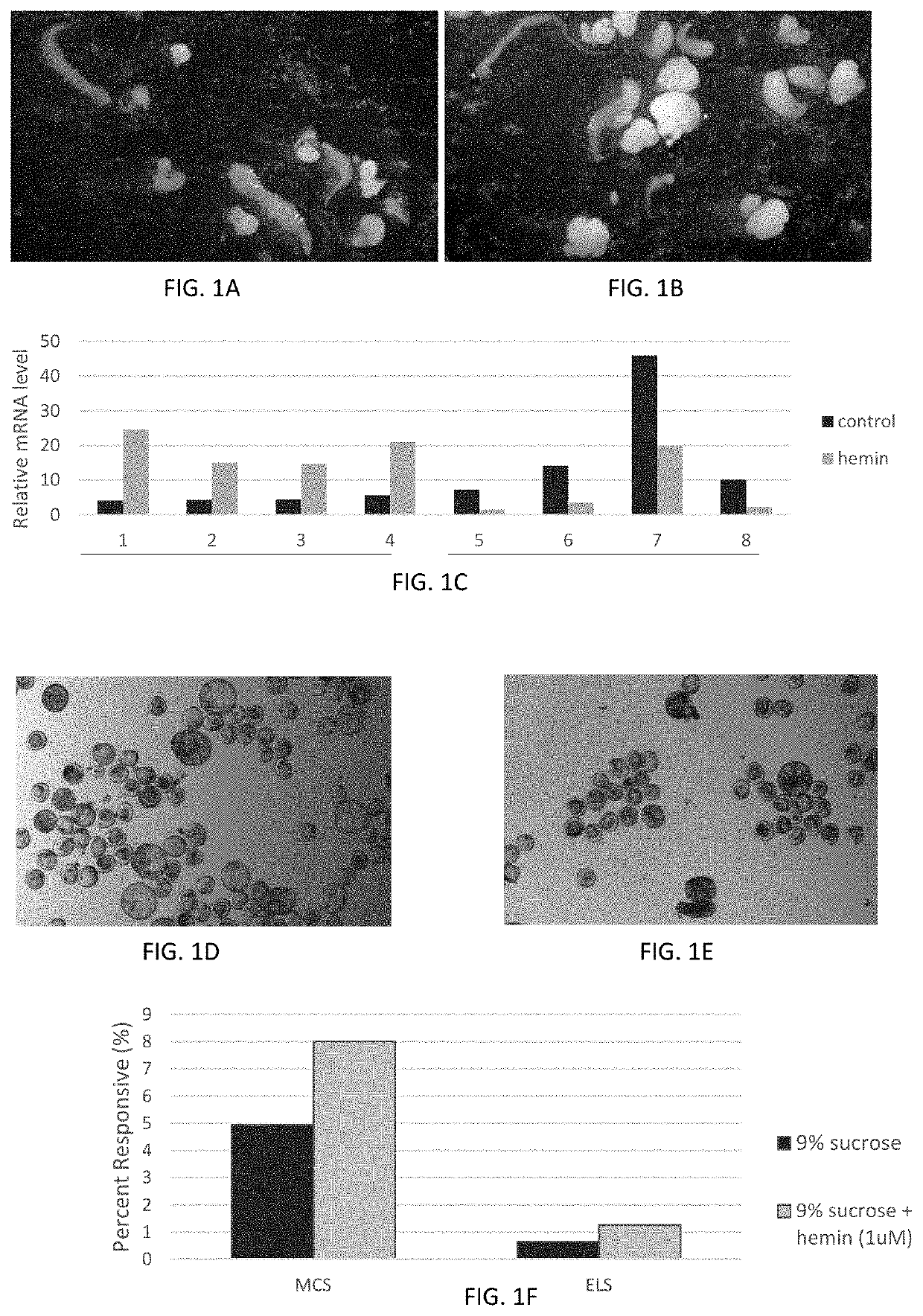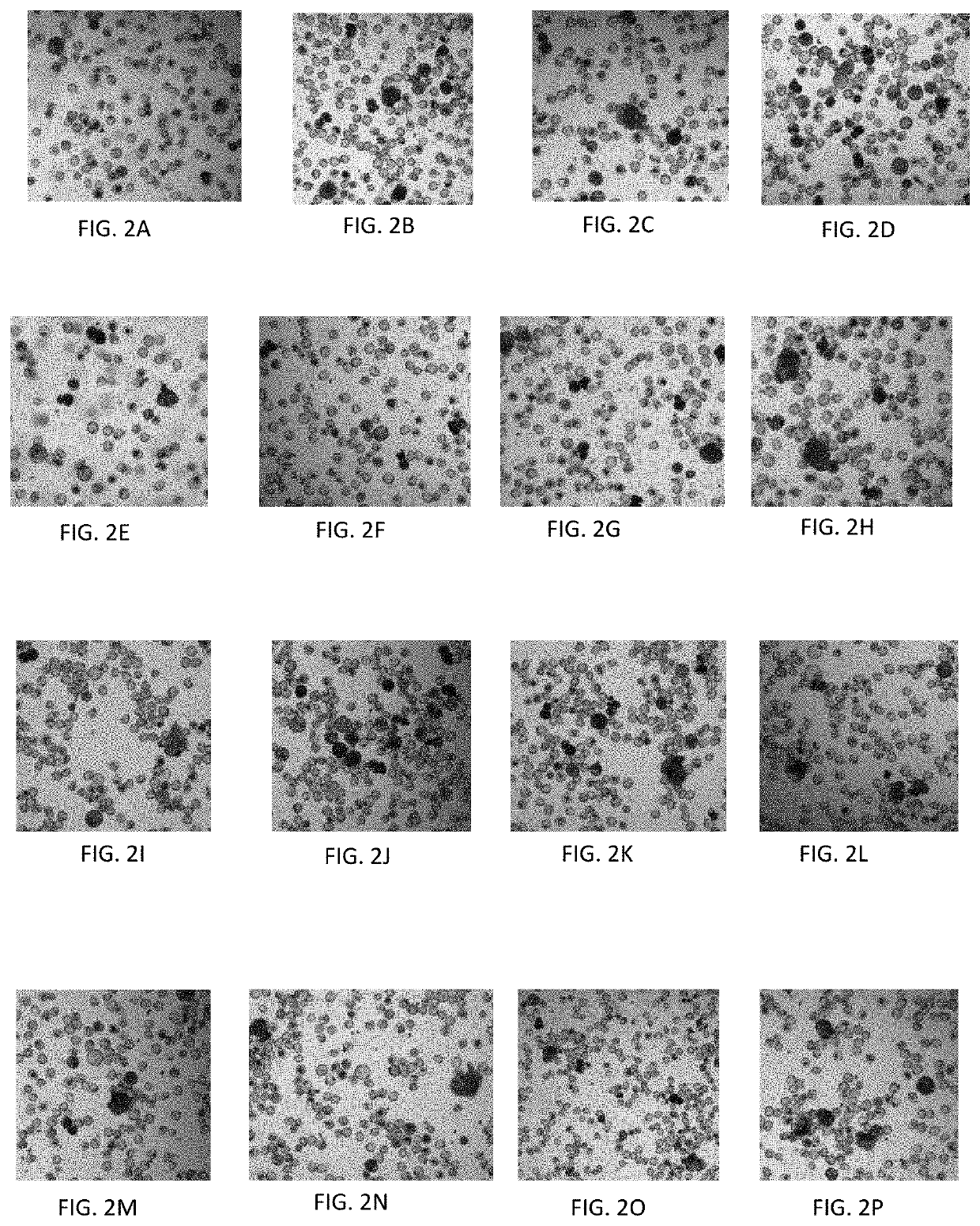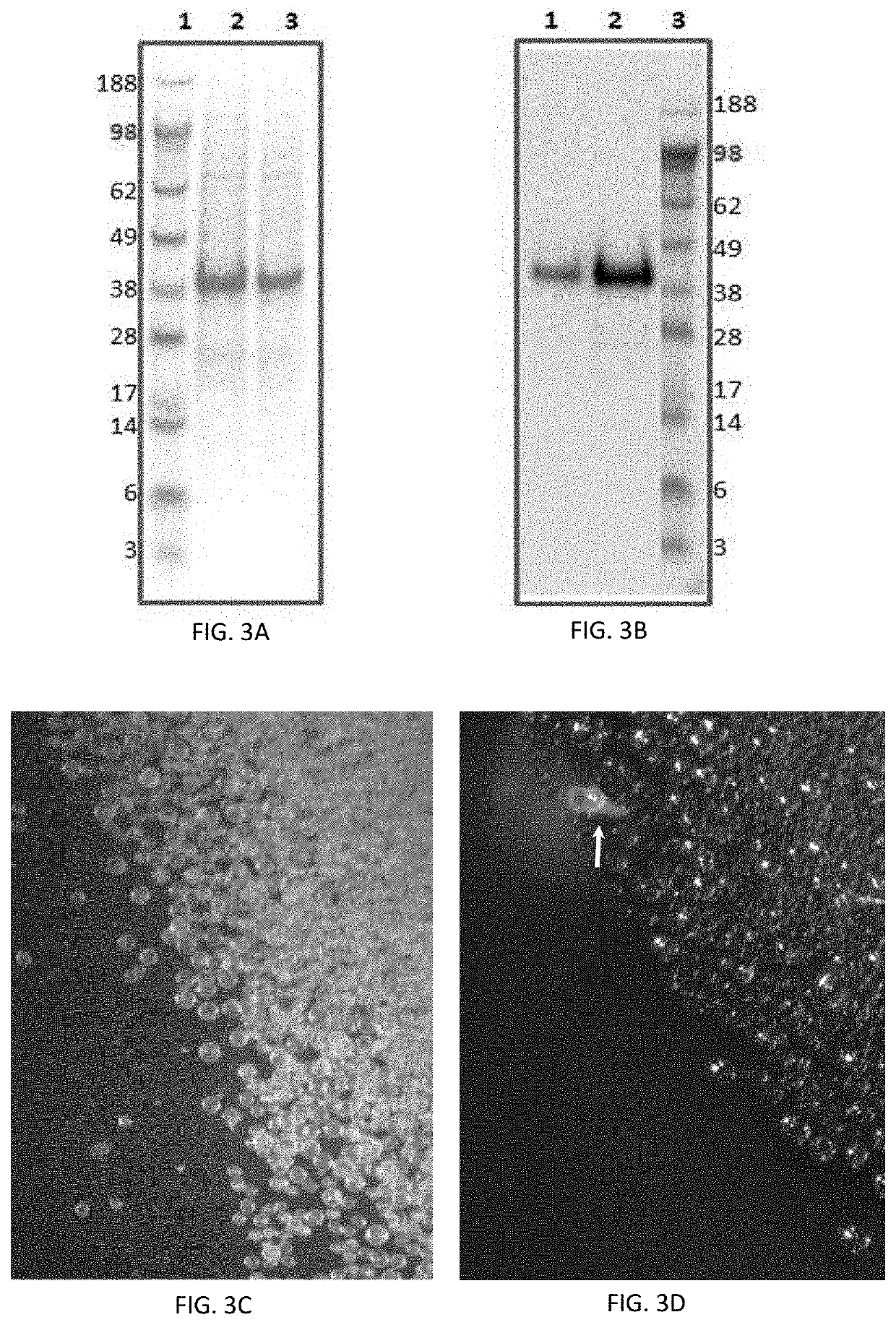Systems and methods for cellular reprogramming of a plant cell
- Summary
- Abstract
- Description
- Claims
- Application Information
AI Technical Summary
Benefits of technology
Problems solved by technology
Method used
Image
Examples
example 1
Microspore Embryogenesis Improved after Embryogenesis Inducer Agent Treatment
[0192]Following microspore isolation, ATCC40520 microspores (see U.S. Pat. No. 5,602,310 incorporated herein by reference in its entirety) were cultured in a petri dish in a 9% sucrose induction medium as a control or a 9% sucrose induction medium supplemented with a 1 μM final concentration of hemin (Sigma-Aldrich, catalog # H9039) at 28° C. under dark conditions.
[0193]After 8 days of in vitro tissue culture, four biological replicates of proliferating embryo-like structures were sampled from each of the control and the hemin-treated ATCC40520 tissue cultures for embryogenesis induction and processed for gene expression analysis using methods known in the art (data not shown).
[0194]Following microspore isolation, ATCC40520 microspores and EH, anelite inbred, that is known to be less responsive relative to the ATCC40520 genotype, were each individually cultured in a petri dish in a 9% sucrose induction medi...
example 2
Co-Culturing Maize Microspores with Feeder Suspension Cell Cultures Expressing an Embryogenesis Inducing Polypeptide Induces Microspore Embryogenesis
[0202]Methods for creating and maintaining maize suspension cell cultures are known to those skilled in the art. Isolated microspores were co-cultured with maize suspension cells stably expressing an embryogenesis inducing morphogenic developmental gene polypeptide, such as a WUSCHEL polypeptide (SEQ ID NO:2) and a ZmODP2 polypeptide (SEQ ID NO:20), an AP2 / ERF transcription factor to determine if media conditioned with maize suspension cells expressing embryogenesis inducing morphogenic developmental polypeptides (“feeder cells”) supported improved microspore embryogenesis responses in non-transgenic isolated microspores. Microspores were isolated as described above. The isolated wild type microspores and the transgenic suspension feeder cells were partition co-cultured in a 4% sucrose liquid induction media using Corning® brand 12 mm T...
example 3
Evaluation of Ex Situ Co-Culturing of Maize Microspores and an Exogenous Polypeptide on Microspore Embryogenesis
[0206]WUSCHEL protein expression and purification was performed using a heterologous expression system expressing a plasmid encoding a ZmWUS2-hexa histidine-tag (SEQ ID NO:1) sequence transformed into DH10Bac cells (Thermo Fisher Scientific catalog #10361012) to generate baculoviruses. Baculovirus-infected SF9 insect cells (Thermo Fisher Scientific catalog #12552014) were incubated for 72 hours at 27° C. The infected insect cells were harvested by centrifugation.
[0207]Purification of the recombinant ZmWUS2-hexa histidine-tag protein (SEQ ID NO:2) was performed using commercially available protein purification methods Following microspore isolation from inbred EH, ZmWUS2-hexa histidine-tag protein treatments were performed for each culture by combining 505 μL of a 4% sucrose induction media, 37.5 μL of molecular grade bovine serum albumin (BSA; 20 mg / ml) (Sigma-Aldrich cata...
PUM
| Property | Measurement | Unit |
|---|---|---|
| Fluorescence | aaaaa | aaaaa |
| Cell viability | aaaaa | aaaaa |
Abstract
Description
Claims
Application Information
 Login to View More
Login to View More - R&D
- Intellectual Property
- Life Sciences
- Materials
- Tech Scout
- Unparalleled Data Quality
- Higher Quality Content
- 60% Fewer Hallucinations
Browse by: Latest US Patents, China's latest patents, Technical Efficacy Thesaurus, Application Domain, Technology Topic, Popular Technical Reports.
© 2025 PatSnap. All rights reserved.Legal|Privacy policy|Modern Slavery Act Transparency Statement|Sitemap|About US| Contact US: help@patsnap.com



